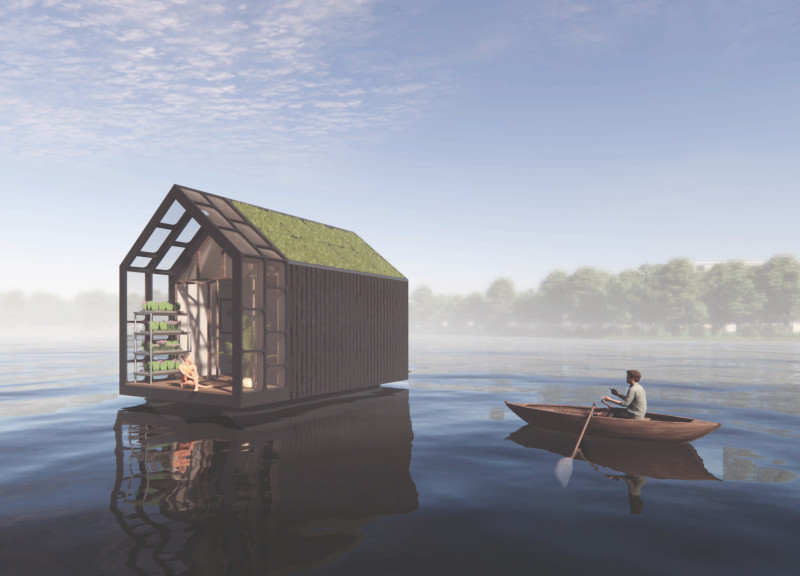5 key facts about this project
The UPCYCLE project offers an innovative solution for living on water through a floating tiny home design. Located in coastal areas with increasing housing needs, this concept aims to address challenges related to urban growth and sustainability. The design focuses on creating a compact and adaptable living space that fits well with its aquatic surroundings while striving to reduce environmental impact.
SUSTAINABLE FRAMING
The structure is built using fiberglass masts that come from old boats. By repurposing these materials, the design reduces waste and gives new life to items often discarded in traditional construction. The use of sailing ropes to connect the masts adds to the commitment to sustainability, ensuring the house is both sturdy and resourceful.
INSULATING INNOVATION
For insulation, the project incorporates shredded glass fibers from boat hulls. These materials not only help to keep the interior warm but also serve as cladding for the walls. This practical approach maximizes the effectiveness of resources while also highlighting the importance of reusing materials to lessen environmental harm.
FUNCTIONAL LAYOUT
The interior layout showcases a practical use of space. It includes areas for living, working, cooking, and sleeping, all arranged to make the most of the limited square footage. The sleeping area is cleverly located above the bathroom, which helps in saving usable space. Additionally, furniture is hidden within walls and floors, making it easier to maintain a tidy and functional environment.
ECOLOGICAL SYSTEMS
The project goes a step further in promoting sustainability with its energy and water systems. Equipped with solar panels, the home generates its electricity. A hydroponic system allows for growing vegetables directly within the space. Additionally, the water management strategy includes methods for filtering rainwater and recycling graywater, supporting self-sufficiency and reducing dependence on standard urban systems.
Large, foldable glass windows add to the overall design, allowing natural light to fill the interior while providing easy access to outdoor views. This detail enhances the connection between the home and the surrounding water, creating a pleasant and inviting living environment.


















































